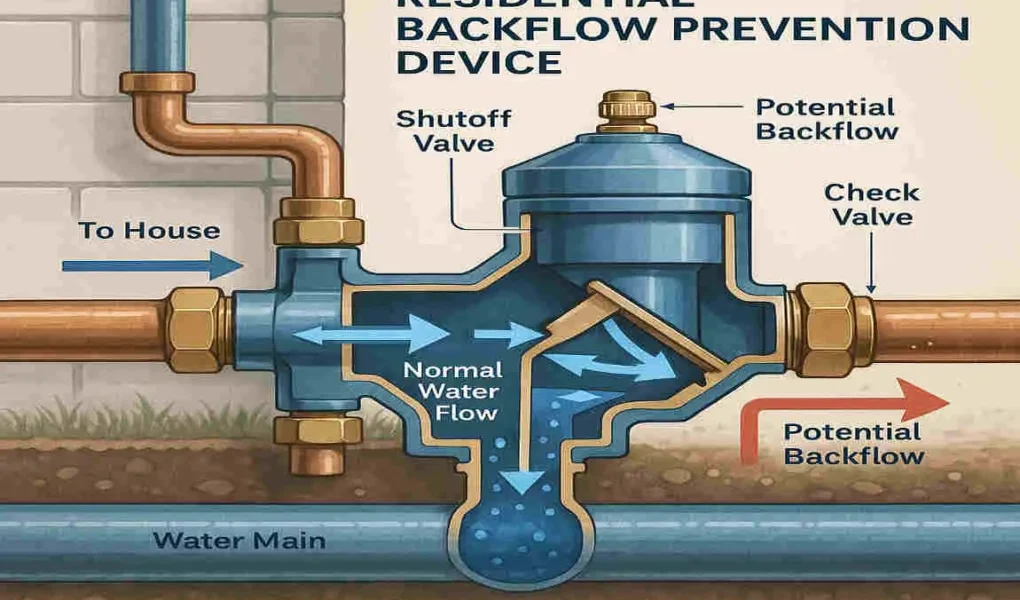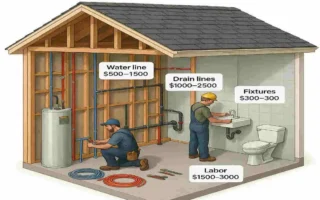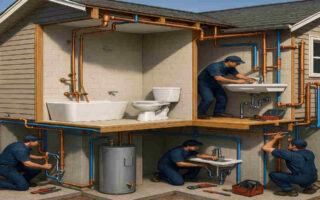Backflow occurs when the normal flow of water in your plumbing system reverses, allowing contaminated water to enter your clean water supply. This can happen due to a sudden drop in water pressure or a rise in pressure from another source. The risks of backflow are severe, ranging from minor inconveniences, such as discoloured water, to severe health hazards from chemical or bacterial contamination.
That’s why backflow prevention is crucial for every homeowner. By installing the right plumbing device, you can protect your family and ensure the safety of your water supply.
What is Backflow? Understanding the Problem
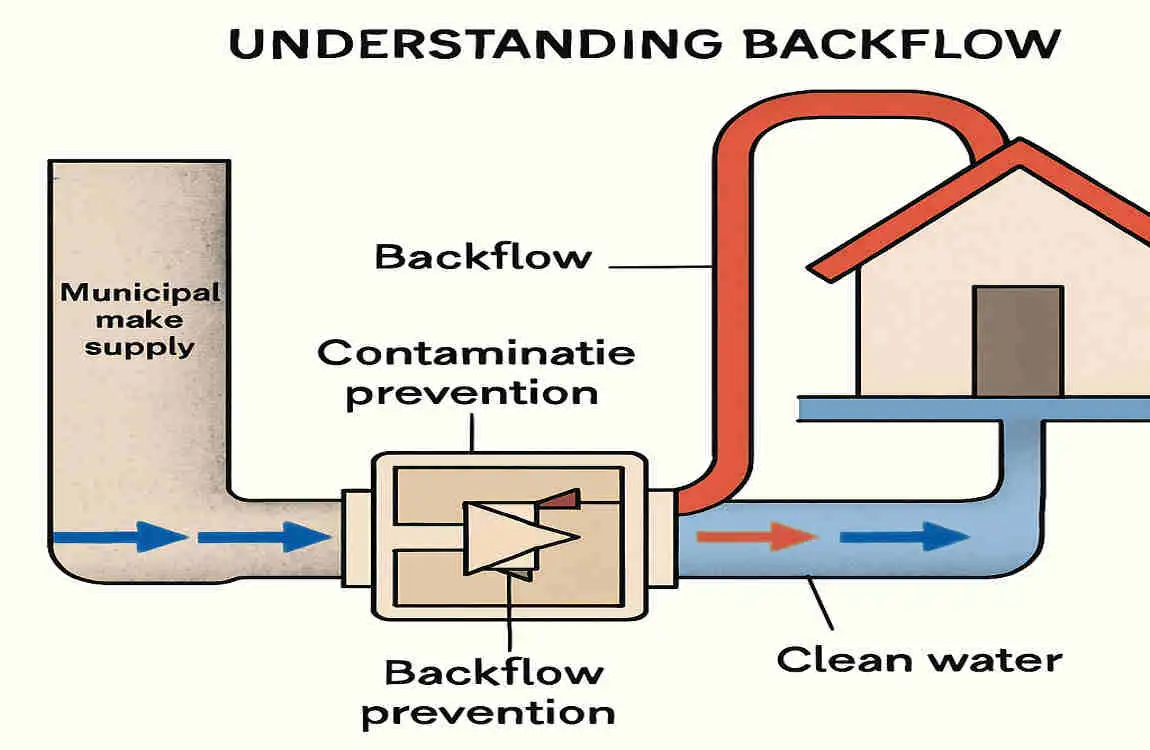
Before we can tackle backflow prevention, it’s essential to understand what backflow is and how it happens. Simply put, backflow is the reverse flow of water in your plumbing system. Instead of clean water flowing from the main supply into your home, contaminated water can flow backwards and enter your clean water lines.
There are several common causes of backflow in residential settings. One of the most frequent culprits is a sudden drop in water pressure, which can occur during a water main break, heavy water usage in the neighbourhood, or the opening of a nearby fire hydrant. When the pressure drops, the water in your pipes can be siphoned backwards, creating a backflow situation.
Another cause of backflow is back pressure, which occurs when the pressure in your plumbing system exceeds the pressure in the main water supply. This can happen if you have a pump or booster system installed, or if a high-pressure source, such as a fire sprinkler system, is connected to your plumbing.
There are two primary types of backflow: backpressure and back siphonage. Back pressure backflow occurs when the pressure in your system exceeds the main supply, causing the water to flow in the opposite direction. Back siphonage, on the other hand, occurs when there’s a sudden pressure drop, creating a vacuum that sucks water backwards.
The consequences of backflow contamination in homes can be severe. At best, you might notice discoloured or bad-tasting water. At worst, you could be exposed to harmful chemicals, bacteria, or other contaminants that can cause serious health issues. That’s why it’s so important to take backflow prevention seriously and protect your family’s well-being.
The Importance of Backflow Prevention in Homes
Now that we understand the risks of backflow, let’s discuss why prevention is crucial for every homeowner. The health hazards associated with contaminated water resulting from backflow are a significant concern. Imagine taking a sip of water from your tap, only to ingest harmful bacteria or chemicals that could make you sick. It’s a scary thought, but one that’s all too real without proper backflow prevention.
Beyond the health risks, there are also financial and legal implications to consider. Many plumbing codes and regulations require the installation and maintenance of backflow prevention devices in residential properties. If you’re found to be in violation of these codes, you could face fines or even legal action. Additionally, the cost of repairing damage caused by backflow contamination can be substantial, ranging from replacing damaged pipes to treating illnesses resulting from contaminated water.
By installing backflow prevention devices, you can maintain the quality and safety of your water supply. These devices work by creating a barrier between your clean water lines and potential sources of contamination, ensuring that water only flows in one direction. This not only protects your family’s health but also gives you peace of mind knowing that your water is safe to use.
As a homeowner, you play a crucial role in backflow prevention. By understanding the risks and taking action to install and maintain the right devices, you can protect your family and your property.
What Plumbing Device Prevents Backflow?
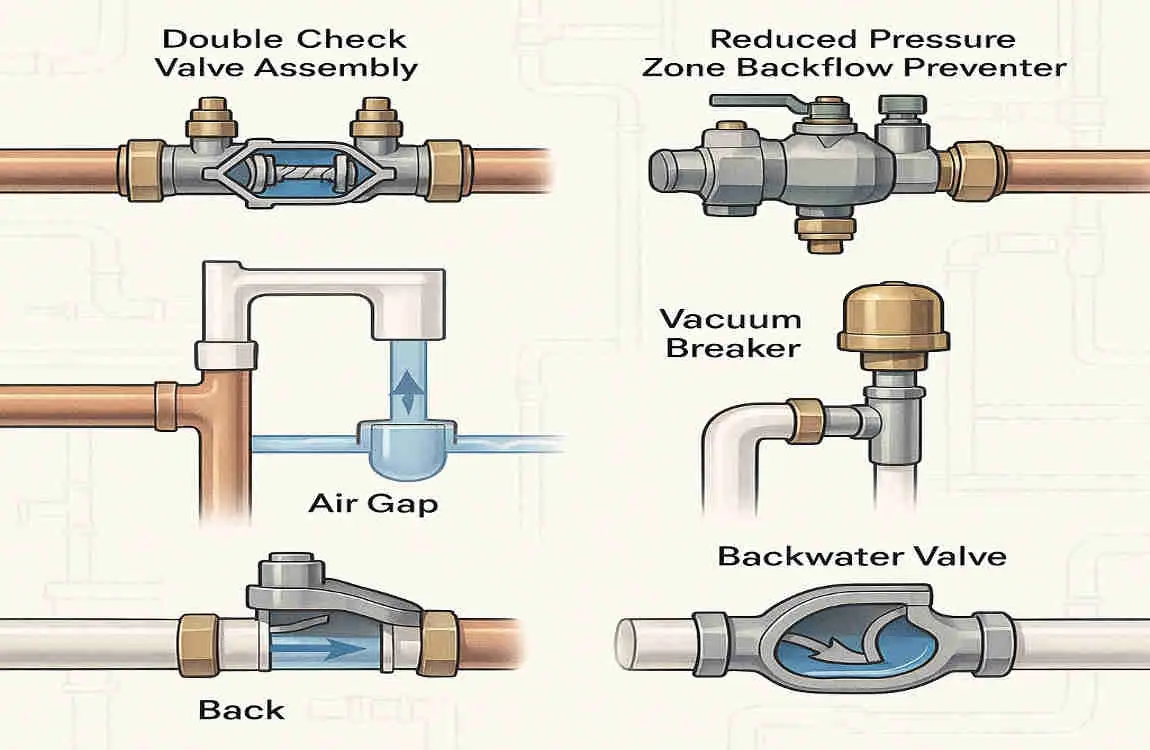
Now, let’s get to the heart of the matter: what plumbing device prevents backflow? The answer is the backflow preventer valve. This device is specifically designed to prevent the reverse flow of water in your plumbing system and maintain the safety of your clean water supply.
A backflow preventer valve works by creating a physical barrier between your clean water lines and potential sources of contamination. When water pressure in your system drops or rises, the valve automatically closes to prevent backflow. This ensures that water only flows in one direction, from the main supply into your home.
There are several types of backflow preventers, each designed to address specific backflow scenarios:
Types of Backflow Preventers
- Check Valves: These simple devices use a spring-loaded flap or ball to allow water to flow in one direction while preventing backflow. They’re commonly used in residential settings and are relatively inexpensive and easy to install.
- Air Gaps: An air gap is a physical separation between the end of a water supply line and the potential source of contamination. This creates a barrier that prevents backflow from occurring. Air gaps are often used in situations where a direct connection between the water supply and a potential contaminant is unavoidable.
- Reduced Pressure Zone (RPZ) Devices: RPZ devices are more complex and expensive than check valves but offer a higher level of protection against backflow. They use a combination of check valves and a relief valve to create a pressure zone that prevents backflow from occurring, even in the event of a pressure drop or rise.
Each type of backflow preventer functions differently to stop backflow, but they all share the same goal: keeping your water supply safe and clean.
When it comes to residential use, check valves and RPZ devices are the most effective backflow preventers. Check valves are a good choice for most homes, as they’re relatively affordable and straightforward to install. However, if you have a higher risk of backflow due to factors like a well or irrigation system, an RPZ device may be a better option.
Identifying backflow preventer devices in your home’s plumbing system can be challenging, but there are a few key indicators to look for. Check valves are typically located near the water meter or main shut-off valve, while RPZ devices may be installed at the point where the water supply enters your home. If you’re unsure about the presence or type of backflow preventer in your system, it’s always best to consult a professional plumber.
How Backflow Preventer Devices Are Installed and Maintained
Now that we know what plumbing device helps prevent backflow, let’s discuss how these devices are installed and maintained. Proper installation and regular maintenance are crucial for ensuring the effectiveness of your backflow prevention system.
Backflow preventer devices should always be installed by a professional plumber who is familiar with local plumbing codes and regulations. Improper installation can lead to ineffective backflow prevention or even damage to your plumbing system. During the installation process, the plumber will assess your home’s plumbing layout and determine the best location for the backflow preventer device.
Once installed, backflow preventer devices require routine testing and maintenance to ensure they’re functioning correctly. The frequency of testing depends on local regulations and the type of device installed, but most experts recommend annual testing as a minimum. During a test, a plumber will inspect the device for leaks, verify proper valve operation, and look for signs of wear or damage.
As a homeowner, there are a few signs you can watch for that may indicate potential backflow problems:
- Discoloured or bad-tasting water
- Reduced water pressure
- Unusual noises in the plumbing system
- Visible leaks or moisture around the backflow preventer device
If you notice any of these signs, it’s essential to call a plumber for an inspection or repairs as soon as possible. Ignoring potential backflow issues can lead to contamination of your water supply and put your family’s health at risk.
Additional Plumbing Devices and Techniques That Help Prevent Backflow
While backflow preventer valves are the primary defence against backflow, there are additional plumbing devices and techniques that can complement your backflow prevention system.
One such device is the vacuum breaker, which is designed to prevent back siphonage in specific situations. Vacuum breakers are commonly used in irrigation systems, hose bibs, and other outdoor water sources where back siphonage is a risk. They work by allowing air to enter the system when pressure drops, breaking the vacuum and preventing backflow.
In addition to devices, there are also plumbing system design tips that can help minimise the risk of backflow:
- Install pressure regulators to maintain consistent water pressure throughout your system.
- Use shut-off valves to isolate sections of your plumbing system and prevent backflow from spreading.
- Avoid cross-connections between your clean water supply and potential sources of contamination, such as irrigation systems or boilers.
By combining backflow preventer valves with these additional devices and techniques, you can create a comprehensive backflow prevention system that keeps your water supply safe and clean.
Legal Regulations and Codes for Backflow Prevention
As a homeowner, it’s essential to be aware of the legal regulations and codes that govern backflow prevention in your area. Plumbing codes related to backflow prevention vary by location, but most require the installation and maintenance of backflow preventer devices in residential properties.
Some standard plumbing codes related to backflow prevention include:
- The International Plumbing Code (IPC) requires the installation of backflow preventers in specific situations, such as when there’s a risk of cross-connection between the water supply and a potential contaminant.
- The Uniform Plumbing Code (UPC) requires the use of backflow preventers in specific applications, including irrigation systems and fire sprinkler systems.
- Local ordinances and regulations may have additional requirements or specifications for backflow prevention in residential properties.
Compliance with these codes is crucial for ensuring the safety of your water supply and avoiding potential fines or legal action. Many insurance companies also require the installation and maintenance of backflow prevention devices as a condition of coverage.
If you’re unsure about the specific backflow prevention requirements in your area, it’s always best to consult with a professional plumber or your local water utility. They can provide guidance on the appropriate devices and maintenance schedules to keep your home in compliance with local regulations.

